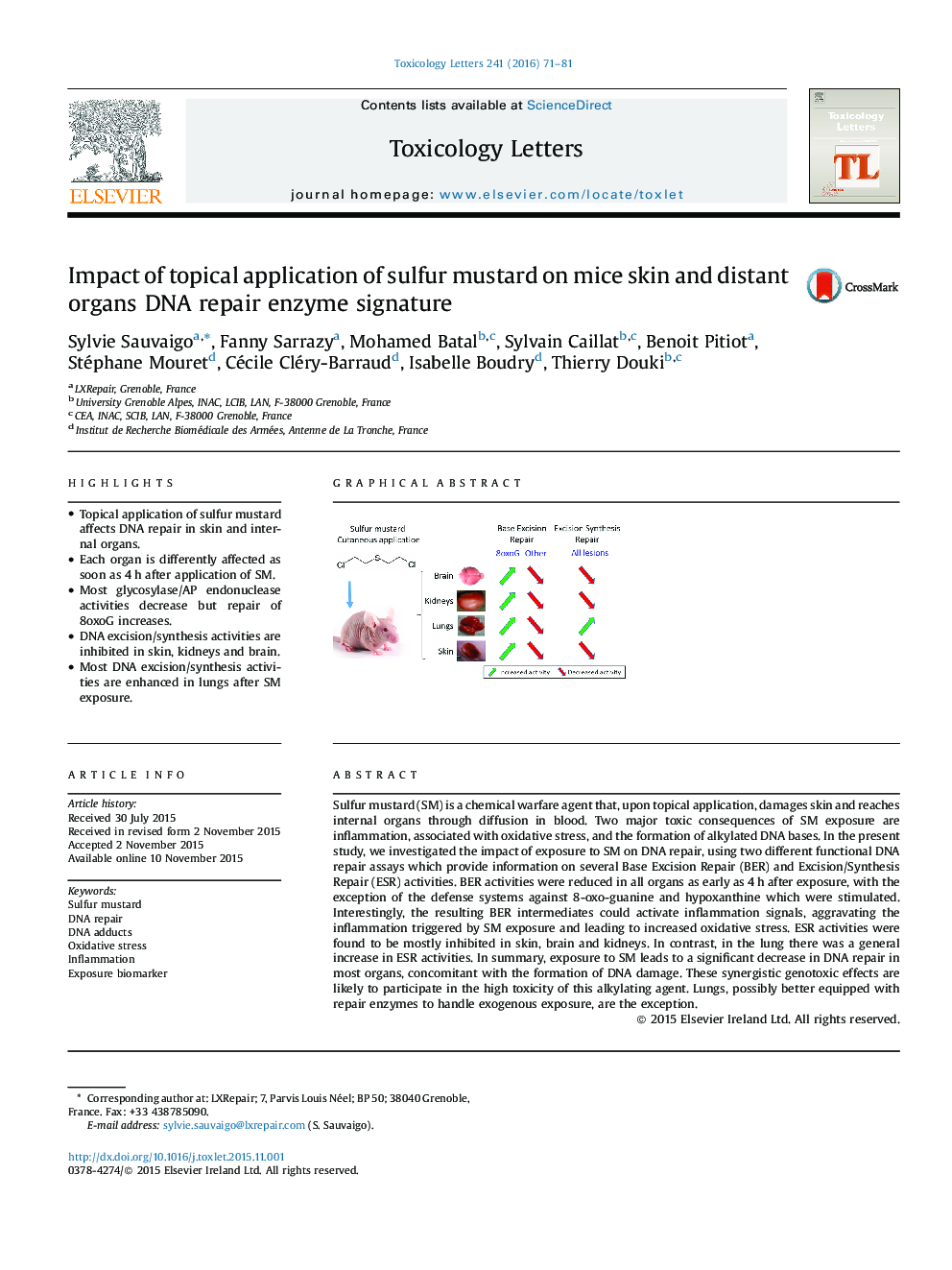| کد مقاله | کد نشریه | سال انتشار | مقاله انگلیسی | نسخه تمام متن |
|---|---|---|---|---|
| 2598541 | 1562631 | 2016 | 11 صفحه PDF | دانلود رایگان |

• Topical application of sulfur mustard affects DNA repair in skin and internal organs.
• Each organ is differently affected as soon as 4 h after application of SM.
• Most glycosylase/AP endonuclease activities decrease but repair of 8oxoG increases.
• DNA excision/synthesis activities are inhibited in skin, kidneys and brain.
• Most DNA excision/synthesis activities are enhanced in lungs after SM exposure.
Sulfur mustard (SM) is a chemical warfare agent that, upon topical application, damages skin and reaches internal organs through diffusion in blood. Two major toxic consequences of SM exposure are inflammation, associated with oxidative stress, and the formation of alkylated DNA bases. In the present study, we investigated the impact of exposure to SM on DNA repair, using two different functional DNA repair assays which provide information on several Base Excision Repair (BER) and Excision/Synthesis Repair (ESR) activities. BER activities were reduced in all organs as early as 4 h after exposure, with the exception of the defense systems against 8-oxo-guanine and hypoxanthine which were stimulated. Interestingly, the resulting BER intermediates could activate inflammation signals, aggravating the inflammation triggered by SM exposure and leading to increased oxidative stress. ESR activities were found to be mostly inhibited in skin, brain and kidneys. In contrast, in the lung there was a general increase in ESR activities. In summary, exposure to SM leads to a significant decrease in DNA repair in most organs, concomitant with the formation of DNA damage. These synergistic genotoxic effects are likely to participate in the high toxicity of this alkylating agent. Lungs, possibly better equipped with repair enzymes to handle exogenous exposure, are the exception.
Figure optionsDownload as PowerPoint slide
Journal: Toxicology Letters - Volume 241, 22 January 2016, Pages 71–81